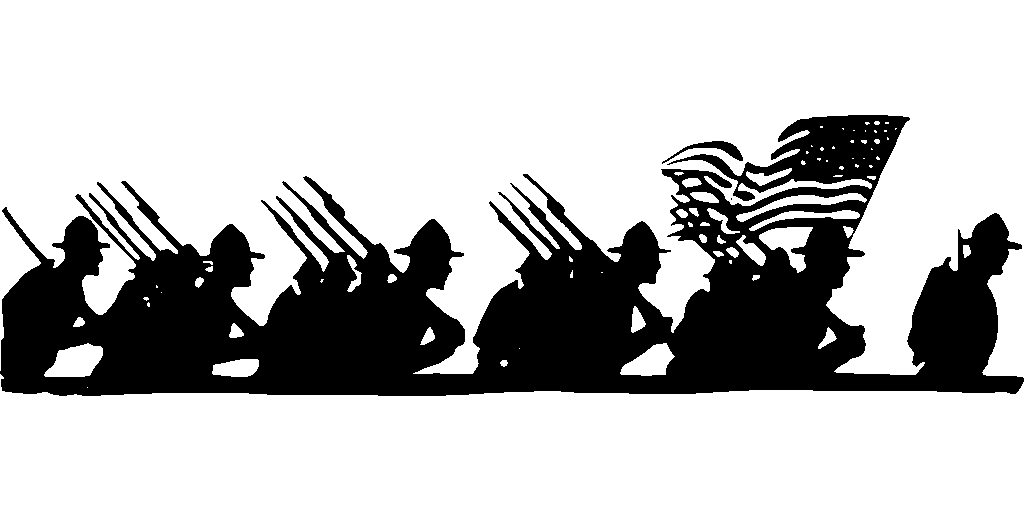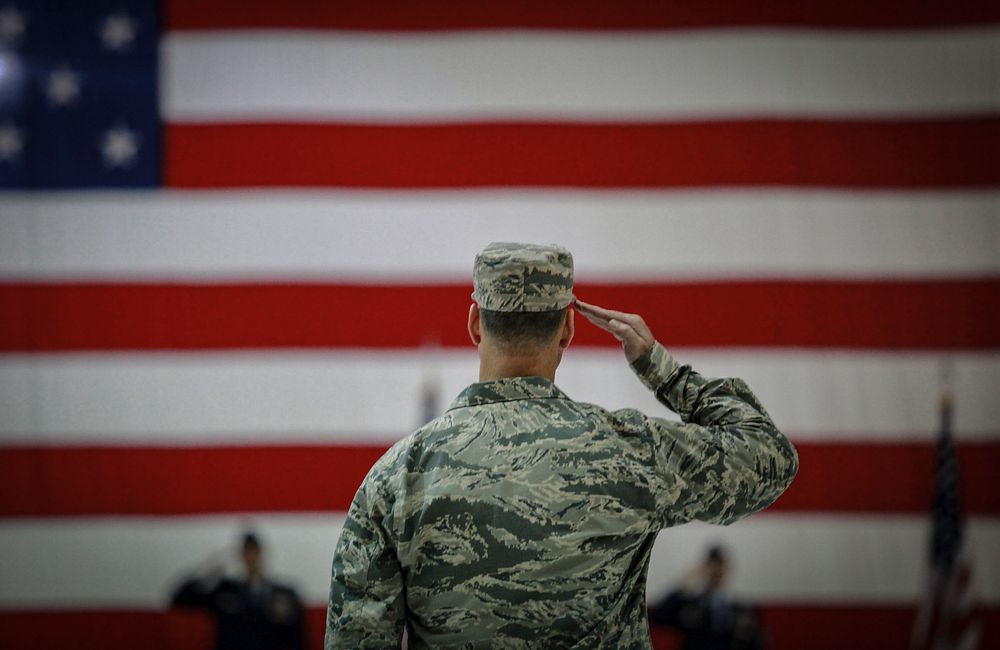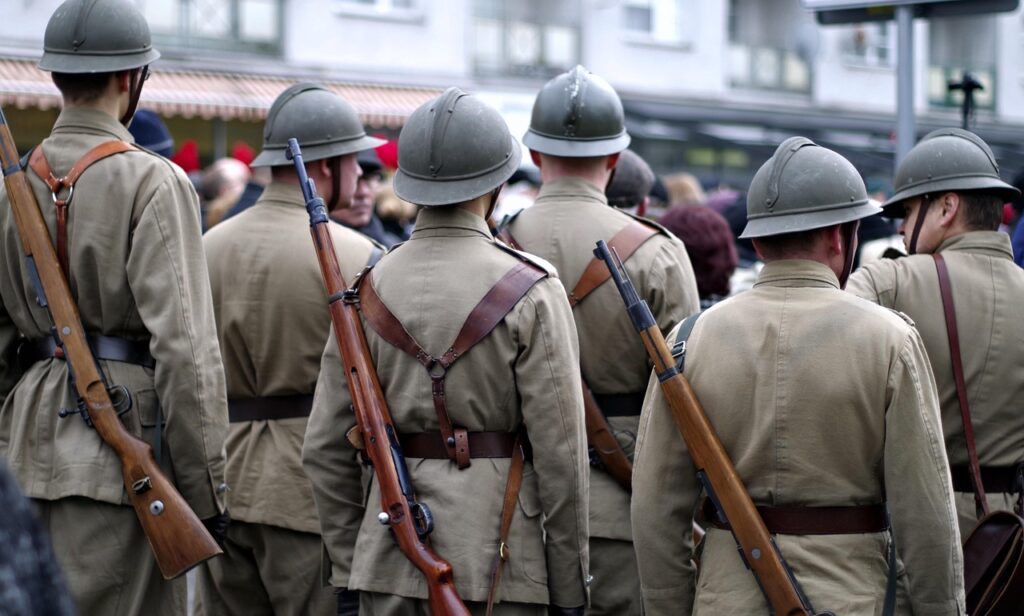
The story of America’s military leadership is a sprawling tapestry woven with threads of conflict, transformation, and a persistent drive for effectiveness. For over two centuries, the United States has grappled with how best to organize and oversee its armed forces, a journey that began with the humble “Department of War” and culminated in the vast “Department of Defense.” This evolution reflects not just shifts in military strategy but profound changes in the nation’s role on the global stage, its administrative philosophy, and its very understanding of national security.
Today, as discussions resurface about potentially reverting the Department of Defense to its historic “Department of War” moniker, it’s an opportune moment to delve deep into the annals of this critical institution. This isn’t merely a debate over semantics; it’s an exploration of identity, historical legacy, and strategic posture. Understanding the genesis and numerous metamorphoses of this department provides crucial context for appreciating the stakes involved in such a proposed change.
Join us on an extensive journey through time, tracing the fascinating trajectory of the civilian agency responsible for America’s armed forces. From its lean beginnings overseeing a nascent army to its complex modern structure guiding a global military, we’ll examine the pivotal moments, the influential figures, and the profound challenges that shaped what was once the War Department, and what it might, once again, become.

1. **The Genesis: Establishing the Department of War in 1789**The foundation of the United States’ military administrative structure was laid shortly after the establishment of its government under President George Washington. On August 7, 1789, a pivotal moment in American history occurred when Congress reestablished the War Department as a civilian agency. This act was crucial, as it formally brought the oversight of the field army under the direct authority of the president, acting as commander-in-chief, and the newly appointed secretary of war. This marked a significant departure from the more decentralized and committee-based approach that characterized the Revolutionary War era.
The department’s origins, in fact, can be traced back to the committees created by the Second Continental Congress in 1775, which were tasked with overseeing the Revolutionary War. These early committees, formed for specific issues like securing ammunition and organizing a national militia, were eventually consolidated. In 1776, they became the Board of War and Ordnance, operated by members of Congress. A second, independent Board of War followed in 1777, before the Congress of the Confederation eventually replaced this system of boards with the Department of War itself. This incremental development highlights the new nation’s early struggles to establish a cohesive military oversight body.
Upon its creation, the Department of War was a remarkably lean operation, reflecting the fledgling nation’s limited resources and the prevailing skepticism towards a large standing army. Initially, only five positions were authorized: the secretary at war, an assistant, a secretary, and two clerks. This modest establishment underscores the magnitude of the task that fell to the first United States secretary of war, Henry Knox, a retired senior general who took on the immense responsibility of forming and organizing both the department and the nascent army. Direct field command of the small Regular Army, however, remained with President Washington himself, emphasizing the civilian control inherent in the new system.
2. **Broad Mandate: Early Responsibilities and the Birth of the Navy Department**In its formative years, the Department of War was an incredibly broad and far-reaching institution, reflecting the limited governmental infrastructure of the late 18th century. Beyond its primary role in the operation and maintenance of the United States Army, it initially bore significant responsibility for naval affairs. This consolidated approach meant that the secretary of war effectively oversaw both land and sea forces, a daunting task for a single cabinet department. The scope of its duties underscored the new nation’s need for a central authority to manage all aspects of its nascent military posture.
However, the administrative burden of managing both land and naval forces soon proved too great for a single department, especially as the nation’s maritime interests grew and the likelihood of naval conflicts increased. The U.S. had used naval forces during the Revolutionary War but struggled to sustain a national navy afterward due to a lack of tax revenue. It wasn’t until lobbying efforts took hold, particularly with the staunch support of President John Adams, that the need for a separate naval authority became undeniable. This eventually led to a critical organizational split in 1798, when the Department of the Navy was officially established.
The creation of the Navy Department marked a significant milestone, carving out a distinct operational sphere for naval forces. Prior to this, the War Department had been responsible for “naval affairs until the establishment of the Navy Department in 1798.” This division allowed for more focused administration and development of each service branch. Interestingly, in its early years, the Department of War also held the crucial responsibility of overseeing interactions with Native Americans, illustrating its role as a key agency in shaping early American expansion and frontier policy, a mandate that would later shift as the government evolved.

3. **Formative Years: Growth, Bureaus, and the American Military Academy**The early 19th century witnessed significant structural developments within the Department of War, even as it navigated periods of expansion and contraction. Following the end of the Quasi-War in 1802, the department experienced a reduction in size. However, this was a temporary measure, as the years leading up to the War of 1812 necessitated a subsequent expansion. This cycle of growth and contraction was a constant feature of the department’s history, often directly tied to the nation’s involvement in conflicts or periods of heightened security concerns. The need to adapt quickly to changing geopolitical realities was paramount.
To accommodate the necessary expansion, sub-departments were gradually created within the War Department, each led by a general staff officer. This marked the beginning of a more specialized and bureaucratized structure, laying the groundwork for greater administrative efficiency. Secretary of War John C. Calhoun, a highly influential figure, further reformed these sub-departments into a modern system of bureaus in 1818. His efforts were instrumental in bringing a more organized and systematic approach to the department’s operations, moving away from ad-hoc arrangements towards a more professional administrative framework.
Beyond internal reorganization, these formative years also saw the establishment of crucial institutions that would define the American military for centuries. The United States Military Academy at West Point, along with the Army Corps of Engineers, were both founded in 1802. These institutions were vital for training future officers and developing critical engineering capabilities, securing a professional backbone for the nation’s army. Furthermore, Secretary Calhoun’s visionary leadership led to the creation of the Bureau of Indian Affairs in 1824, which served as the primary agency within the War Department addressing Native American issues until 1849, when it was transferred to the newly founded Department of the Interior, marking another evolution in the department’s ever-changing responsibilities.

4. **Civil War’s Demands: Unprecedented Expansion and Social Mandates**The American Civil War proved to be an unparalleled test for the Department of War, pushing its capabilities and responsibilities to unprecedented limits. The sheer scale of the conflict, involving both the regular army and a much larger temporary volunteer army, necessitated a massive expansion of the department’s functions. It became the central hub for managing virtually every aspect of the Union war effort. This included the daunting tasks of recruiting, training, supplying, providing medical care for, transporting, and paying two million soldiers. The administrative logistics required were staggering, transforming the department into a colossal wartime machine.
While a separate command structure managed the actual military operations on the battlefield, the War Department was the indispensable engine behind the front lines, ensuring that the fighting forces were equipped, provisioned, and manned. The efficiency, or sometimes the lack thereof, in these administrative functions directly impacted the Union’s ability to wage and ultimately win the war. This period highlighted the critical importance of robust civilian oversight and logistical support in modern warfare, a lesson that would resonate throughout subsequent conflicts and continue to shape military organization.
Furthermore, the Civil War era saw the Department of War assume a profound, albeit temporary, social mandate. In the late stages of the war and throughout the Reconstruction era, the department took charge of refugees and freedmen (freed slaves) in the American South through the Bureau of Refugees, Freedmen and Abandoned Lands. This bureau played a major role in supporting the new Republican governments in the southern states, a significant expansion of military involvement into social and political reconstruction. When military Reconstruction concluded in 1877, the U.S. Army withdrew its last troops, and the bureau’s functions eventually ceased, demonstrating the department’s capacity for extraordinary, albeit temporary, civic responsibilities during times of national crisis.
5. **Late 19th Century Overhaul: Elihu Root’s Vision for a Modern Military**As the 19th century drew to a close, the United States Army found itself in a rather humble position on the global stage. In 1890, it comprised a mere 39,000 men, making it “the smallest and least powerful army of any major power” at the time, starkly contrasted with France’s army of 542,000. The Spanish-American War of 1898, fought largely by “temporary volunteers and state militia units,” served as a stark wake-up call, demonstrating a critical need for more effective control over the War Department and its sprawling bureaus. This conflict exposed systemic weaknesses in organization and coordination, necessitating a dramatic overhaul.
Stepping into this challenge was Secretary of War Elihu Root, who served from 1899 to 1904. Root embarked on an ambitious mission to modernize the War Department, aiming to transform it into a more businesslike and efficient organization. His key initiatives included seeking to appoint a “chief of staff as general manager” and establishing a “European-type general staff for planning.” These reforms aimed to centralize strategic direction and overcome the fragmented authority often held by individual bureaus. However, his efforts initially faced resistance, notably from General Nelson A. Miles, highlighting the internal power struggles inherent in such large-scale organizational change.
Despite opposition, Root pressed forward with significant institutional reforms. He “enlarged the United States Military Academy at West Point, New York” and crucially “established the United States Army War College and the General Staff.” These measures were designed to cultivate a more professional officer corps and a dedicated planning body. Root also implemented new procedures for promotions, organized specialized schools for various branches of service, and “devised the principle of rotating officers from staff to line,” fostering broader experience among military leaders. His visionary work extended to governance in new territories acquired after the Spanish-American War, where he developed procedures for Cuba’s handover, wrote the charter for the Philippines, and eliminated tariffs on goods from Puerto Rico, demonstrating a multifaceted approach to national and international administration.

6. **World War I’s Crucible: Bureaucratic Challenges and Wartime Reorganization**The advent of World War I presented the War Department with yet another formidable test of its organizational capacity and adaptability. Despite the reform efforts of Elihu Root and subsequent secretaries like Henry L. Stimson and Major General Leonard Wood, who had revived Root’s initiatives in 1911 to rationalize army organization, the path to modernization was not smooth. Prior to America’s entry into the war on April 6, 1917, “Congress reversed these changes in support of the bureaus and in the National Defense Act of 1916 reduced the size and functions of the general staff to few members,” effectively decentralizing power once more. This legislative rollback underscored the persistent tension between centralized control and the autonomy of various military bureaus.
When the United States entered the global conflict, President Woodrow Wilson initially supported Secretary of War Newton D. Baker, who “opposed efforts to control the bureaus and war industry.” This stance led to significant problems, as intense “competition for limited supplies almost paralyzed industry and transportation, especially in the North.” The fragmented authority within the department and among war industries proved detrimental to an efficient war effort, highlighting the critical need for coordinated procurement and logistical management on a national scale. The initial resistance to centralizing control demonstrated a learning curve in managing modern, industrial-scale warfare.
Facing immense pressure from both Congress and industry to rectify these inefficiencies, Secretary Baker was compelled to enact substantial reforms. He placed Benedict Crowell “in charge of munitions” and appointed Major General George W. Goethals as “acting quartermaster general” and General Peyton C. March as “chief of staff.” These key appointments, supported by industrial advisers, led to a dramatic overhaul. They “reorganized the supply system of the army and practically wiped out the bureaus as quasi-independent agencies.” General March further “reorganized the general staff along similar lines and gave it direct authority over departmental operations,” consolidating power and streamlining the war effort. However, this centralization was short-lived, as “after the war, the Congress again granted the bureaus their former independence,” setting the stage for future challenges.

7. **Interwar Evolution: Refining the General Staff’s Authority**Following the immense administrative efforts and reorganizations of World War I, the War Department entered an interwar period characterized by continued efforts to refine its structure and the authority of its General Staff. In the 1920s, General John J. Pershing, a towering figure from the Great War, “realigned the general staff on the pattern of his American Expeditionary Force (AEF) field headquarters,” which he had commanded with significant authority. This move was an attempt to instill the lessons learned from wartime command and control into the permanent peacetime structure of the department, aiming for greater cohesion and responsiveness.
Despite Pershing’s efforts, the early 1920s still saw the General Staff exercising “little effective control over the bureaus.” The pendulum had swung back towards bureau autonomy after the war, largely due to congressional actions that restored their independence. This persistent struggle between central staff authority and the semi-autonomous bureaus was a recurring theme in the War Department’s history, reflecting different philosophies of military administration and the political power of established departmental components. The challenge was to balance specialized expertise with unified strategic direction.
However, over the course of the 1920s and 1930s, a gradual but significant shift occurred. The “chiefs of staff gradually gained substantial authority over them by 1939,” a trend that culminated with General George C. Marshall assuming the office of Army chief of staff just as the world plunged into another global conflict. This slow, incremental accumulation of power by the General Staff was crucial, as it set the stage for a more centralized and coordinated command structure that would be desperately needed as the United States prepared for and entered World War II, learning from the organizational shortcomings of past conflicts to build a more resilient and effective military leadership.

8. **World War II’s Organizational Imperative: Marshall’s Vision**The onset of World War II presented the War Department with its most profound challenge yet, demanding an organizational structure capable of managing a truly global conflict. General George C. Marshall, assuming the office of Army chief of staff in 1939, found himself burdened by fragmented authority, leading him to famously describe the chief of staff position as a “poor command post.” His primary role during this period was to advise President Franklin D. Roosevelt on overarching military strategy, rather than delve into the granular management of the department. This administrative reality underscored the urgent need for a more unified and streamlined approach to military leadership.
Recognizing the critical need for reform, President Roosevelt appointed Henry L. Stimson as Secretary of War. Following the devastating attack on Pearl Harbor, Secretary Stimson wholeheartedly supported General Marshall’s efforts to fundamentally reorganize the army under the provisions of the War Powers Act of 1941. This decisive action was a direct response to the inefficiencies and decentralization that had plagued the department, making it poorly equipped to direct the immense logistical and operational demands of a worldwide war. The goal was clear: to create an agile and responsive military structure for the unprecedented scale of the conflict.
Marshall’s reorganization was transformative, dividing the Army of the United States (AUS) into three largely autonomous components, each with distinct functions crucial to the war effort. The Army Ground Forces (AGF) took charge of training land troops, ensuring a steady supply of well-prepared infantry and armored units for combat. Simultaneously, the U.S. Army Air Forces (USAAF) rapidly developed into a virtually independent air arm, reflecting the growing importance of air power in modern warfare. The third component, the Services of Supply (later renamed Army Service Forces), was tasked with directing the colossal administrative and logistical operations, ensuring that troops were equipped, supplied, and transported efficiently across vast distances. The Operations Division, meanwhile, served as Marshall’s dedicated general planning staff, providing strategic foresight for the war.

9. **Postwar Fragmentation and the Drive for Unification**Even as World War II drew to a close, the hard-won organizational efficiencies achieved under General Marshall began to unravel. The immediate postwar period saw a lamentable return to the fragmented prewar pattern, with the War Department abandoning Marshall’s centralized structure. This regression meant that independent services once again began to vigorously “parry efforts to reestablish firm executive control over their operations,” showcasing a persistent bureaucratic resistance to unified command. The lessons of combined operations during the global conflict, where inter-service cooperation proved vital, were at risk of being forgotten amidst renewed jurisdictional squabbles.
Leaders at the time were acutely aware that modern warfare demanded combined operations among the various services. World War II had made it an “obvious problem” that coordination across the Army, Navy, and newly emerging air power was not just beneficial, but essential for strategic success. However, during the war itself, senior officials deemed it “too disruptive” to implement sweeping restructuring decisions in the midst of active combat, choosing to defer comprehensive reforms until after the fighting concluded.
The advent of the Cold War further intensified the urgency for a more unified military. Military historian Wayne Lee noted that by 1947, even as the Cold War was “barely even getting started,” there was a clear “recognition that the United States is going to continue to have forces deployed on a global level.” This new geopolitical reality underscored the absolute necessity of a more cohesive command structure, moving beyond the traditional, often siloed, departmental approaches to ensure national security in a rapidly changing world. This vision would lay the groundwork for one of the most significant transformations in American military history.

10. **The National Security Act of 1947: A New Era of Integration**The compelling need for military unification and streamlined national security operations culminated in a landmark legislative achievement: President Harry S. Truman signing the National Security Act in July 1947. This pivotal law was a direct effort to bring a new level of unity to the armed services, fundamentally reshaping the administrative landscape of America’s military. It marked a radical departure from the independent departmental structures that had characterized U.S. defense for over a century and a half, signaling a concerted move towards comprehensive strategic coordination.
The act ushered in the creation of the National Military Establishment, an overarching entity designed to merge the previously distinct Navy and War Departments, and crucially, to incorporate the newly formed Air Force. Under this new structure, a civilian defense secretary was placed at the helm, providing singular executive oversight to the military enterprise. This secretary was also given authority over the Joint Chiefs of Staff, ensuring a unified strategic direction for all branches of service, a critical evolution from the earlier, more fragmented command structures.
Beyond military organization, the National Security Act of 1947 had far-reaching implications for the nation’s intelligence apparatus. It also established several other vital institutions designed to bolster national security in the burgeoning Cold War era. These included the creation of the Central Intelligence Agency (CIA), the National Security Agency (NSA), and the National Security Resources Board (NSRB). These new agencies reflected a broader understanding of national security, extending beyond purely military operations to encompass intelligence gathering, analysis, and strategic resource management on an unprecedented scale.
11. **Dissolution and the Emergence of Service-Specific Departments**With the signing of the National Security Act of 1947, the venerable Department of War, an institution that had served the nation for 158 years from August 7, 1789, was formally dissolved. This dissolution marked the definitive end of an era, replacing a singular, all-encompassing war department with a more specialized, service-oriented administrative framework designed for the complexities of modern military operations. The old War Department was historically responsible for the Army and, until 1798, naval affairs, and later for most land-based air forces until 1947.
In its place, the act legislated a critical split, giving birth to two distinct entities: the Department of the Army and the Department of the Air Force. These new departments, alongside the pre-existing Department of the Navy, were integrated into the newly created National Military Establishment. This restructuring aimed to provide dedicated administrative and operational focus for each primary service branch, recognizing the unique requirements and evolving doctrines of land, sea, and air warfare.
The leadership structure also evolved. The Act stipulated that a Secretary of the Army and a Secretary of the Air Force would be appointed, serving as operating managers for their respective branches. These service secretaries, however, were placed under the overall authority of the new Secretary of Defense, ensuring a degree of unified civilian control over the distinct service components. This represented a fundamental shift from the previous arrangement where the Secretary of War held cabinet rank and essentially presided over the Army, signaling a stronger emphasis on integrated defense strategy.

12. **The 1949 Amendment: Solidifying the Department of Defense**Just two years after the initial, groundbreaking National Security Act, further refinement was deemed necessary to strengthen the unified command structure. In August 1949, the National Security Act was amended, introducing crucial changes that solidified the administrative hierarchy and cemented the new vision for America’s military. This amendment not only clarified but also significantly increased the power of the Secretary of Defense, transforming the role into the central figure of national military oversight.
Perhaps the most symbolic and enduring change brought about by the 1949 amendment was the renaming of the National Military Establishment. It was officially rechristened as the United States Department of Defense. This new title reflected a broader, more integrated approach to national security, moving beyond the historical focus on ‘war’ to embrace the concept of comprehensive defense, encompassing all military branches under a singular, powerful departmental umbrella.
Under this amended act, the secretaries of the Army, Navy, and Air Force, previously holding cabinet rank, were formally brought under the direct authority of the Secretary of Defense. Their roles were redefined, becoming subordinate to the defense secretary. Furthermore, the amendment established the office of Chairman of the Joint Chiefs of Staff, providing a single, senior military advisor to the President and Secretary of Defense, ensuring clearer lines of communication and strategic coordination across the services. This move, as Wayne Lee noted, helped mediate the “ongoing inter-service rivalry” by providing a central authority.
13. **Why ‘Defense’ Over ‘War’: A Postwar Paradigm Shift**The decision to abandon the venerable name ‘Department of War’ for ‘Department of Defense’ was not merely a cosmetic change; it reflected a profound shift in American geopolitical philosophy in the aftermath of World War II. Around the world, many governments chose to move away from the explicit term ‘War’ when referring to their civilian military leadership, favoring a nomenclature that suggested a more proactive, yet less aggressive, posture. This move aimed to convey a national commitment to maintaining peace through strength, rather than solely projecting an image of conflict.
President Harry S. Truman, upon signing the amended act in August 1949, articulated the core principles behind this transformation. He stated that the new Department of Defense represented a “unification” of the armed forces. His vision was clear: this restructuring would foster “increased efficiency and economy and greater coordination of our military forces.” The goal was to eliminate the internal competition and fragmentation that had hindered past war efforts, ensuring that America’s military resources were utilized optimally and harmoniously.
The historical context further illuminates this shift. As military historian Wayne Lee explained, a “similar battle existed before the services were put under one department, but in some ways it was ‘worse’ because the bureaus inside the Army ‘competed for resources with each other and mostly competed to maintain their autonomy against the commanding general.'” The experience of World War II, however, effectively “wiped out” this internal competition, giving way to the Department of Defense. This new title, and its accompanying organizational structure, was a direct outcome of wartime lessons, designed for enduring efficacy and strategic coherence, a structure that has remained largely intact for over 76 years.
14. **The Contemporary Debate: President Trump’s Proposal to Revert**Decades after its transformation, the long-standing title of the Department of Defense has become the subject of a contemporary debate, sparked by President Donald Trump’s repeated proposals to revert its name back to the ‘Department of War.’ This idea, which Trump has hinted at multiple times, including in a July 11 Truth Social post and during a NATO summit, represents a significant potential shift in how America’s military is perceived, both domestically and internationally. He has even referred to Secretary of Defense Pete Hegseth as the “Secretary of War” in public statements, with Hegseth responding, “It’s coming, sir.”
President Trump articulated his rationale for the proposed name change during an August 25 Oval Office event. He remarked that it “used to be called the Department of War and it had a stronger sound.” He linked the former name to past military successes, stating, “as you know, we won World War I, we won World War II. We won everything. Now we have a Department of Defense with defenders.” For Trump, the existing name implies a solely defensive posture, and he desires “not to be defense only” but also “offense too,” believing the ‘Department of War’ moniker more accurately reflects a nation ready to wage war to secure its interests and ensure “peace through strength.”
This proposed rebranding aligns with a broader trend observed in the second Trump Administration, where name changes have become a hallmark, particularly concerning the Pentagon. Earlier in the administration, Secretary Hegseth announced that Army bases previously named after Confederate leaders, which had been renamed following 2020 diversity initiatives, would revert to their original namesakes. Intriguingly, these base renamings came with a twist: while the last names were fundamentally the same, they were attributed to different soldiers with the same surnames, illustrating a nuanced approach to historical remembrance and identity within the military establishment.

15. **Implications and Hurdles for a Name Reversion**The suggestion to revert the Department of Defense’s name to the Department of War, while politically charged, faces significant strategic and practical implications. Firstly, Department of Defense officials have indicated that such a change would “likely require the help of Congress,” as the legal name was established by Congress in 1949. Constitutional scholar Steve Vladeck confirmed that “while the president is free to refer to the Pentagon by whatever name he chooses, its ‘legal name can’t change without Congress,'” highlighting a critical legal hurdle for any permanent renaming.
Beyond legislative challenges, the practicalities of a name change are immense and costly. A military history professor at the University of North Carolina, Chapel Hill, Wayne Lee, pointed out the sheer volume of institutional memory that would need to be altered. “The DOD has been writing things now for 70-some-odd years. That’s a large volume of stuff and labels, and for God help us web links,” he stated. This means changing references in countless memos, official manuals, online links, and physical signs across the country, a logistical undertaking of staggering proportions.
While officials have not provided cost estimates for this specific change, previous efforts offer a glimpse into the potential expense. The congressionally mandated Naming Commission, tasked with renaming military installations honoring Confederate leaders, estimated their efforts would cost nearly $62.5 million. A full departmental name change, affecting the largest department in the U.S. government, could easily far exceed this figure. Moreover, Lee highlights a fundamental historical distinction: “There was never a unified cabinet level defense secretary of war. There was a secretary of war, but that was the secretary of the Army.” The modern Department of Defense, with its five branches, is fundamentally different from the 18th-century War Department, making the proposed reversion not merely a return to an old title, but a rebranding with complex historical, legal, and operational undertones.
As we’ve journeyed through the intricate history of America’s military leadership, from the fledgling Department of War to the multifaceted Department of Defense, it becomes clear that this institution is a living testament to evolution, adaptation, and constant reevaluation. Each shift, whether born from conflict or political necessity, has shaped the nation’s capacity to protect its interests and project its power. The ongoing debate about its name is more than just semantics; it’s a reflection of America’s enduring discussion about its role in the world and the very identity of its armed forces. The legacy of the past continues to inform the choices of the present, ensuring that the saga of America’s military command remains as dynamic as the nation itself.








